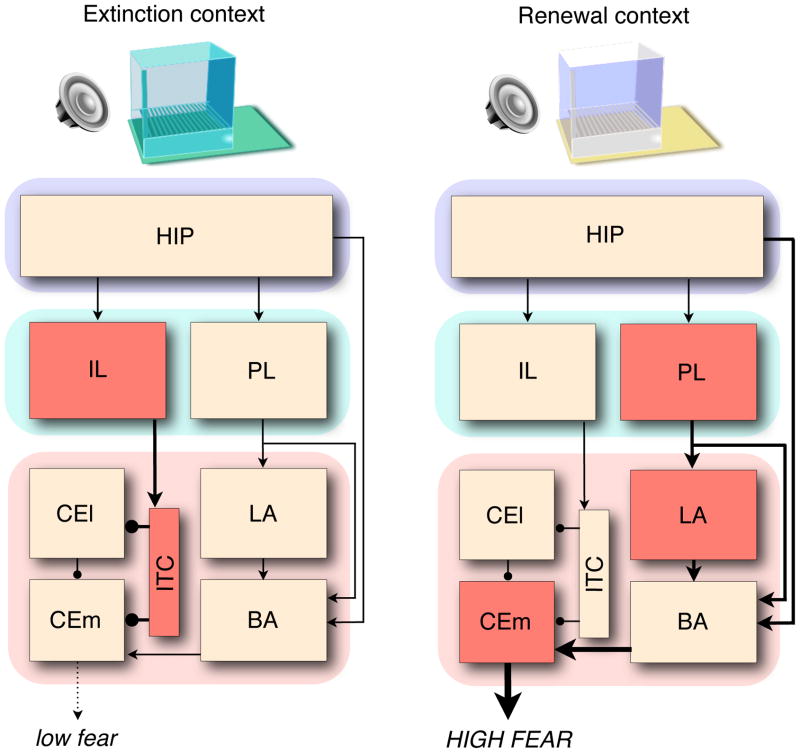Figure 2.
Contextual control of extinction. A simplfied neuroantaomical schematic illustrating differential c-fos expression in brain structures involved in the expression of fear after extinction. Suppression of fear to a CS in the extinction context (left) is associated with activity in the infralimbic division of the medial prefrontal cortex (IL) and inhibitory intercalated neurons (ITC) in the amygdala. Inhibition of the medial division of the central nucleus (CEm) by the ITC limits the expression of conditioned fear. The return of fear to a CS presented outside of the extinction context (Renewal context, right) is associated with activity in the prelimbic division of the medial prefrontal cortex (PL), the lateral nucleus of the amygdala (LA), and CEm. The hippocampus (HIP) basal nuclei of the amygdala (BA) are engaged in both situations, and may therefore gate the expression of conditioned fear through their connections with the the unique prefrontal-amygdala networks associated with extinction and renewal.

